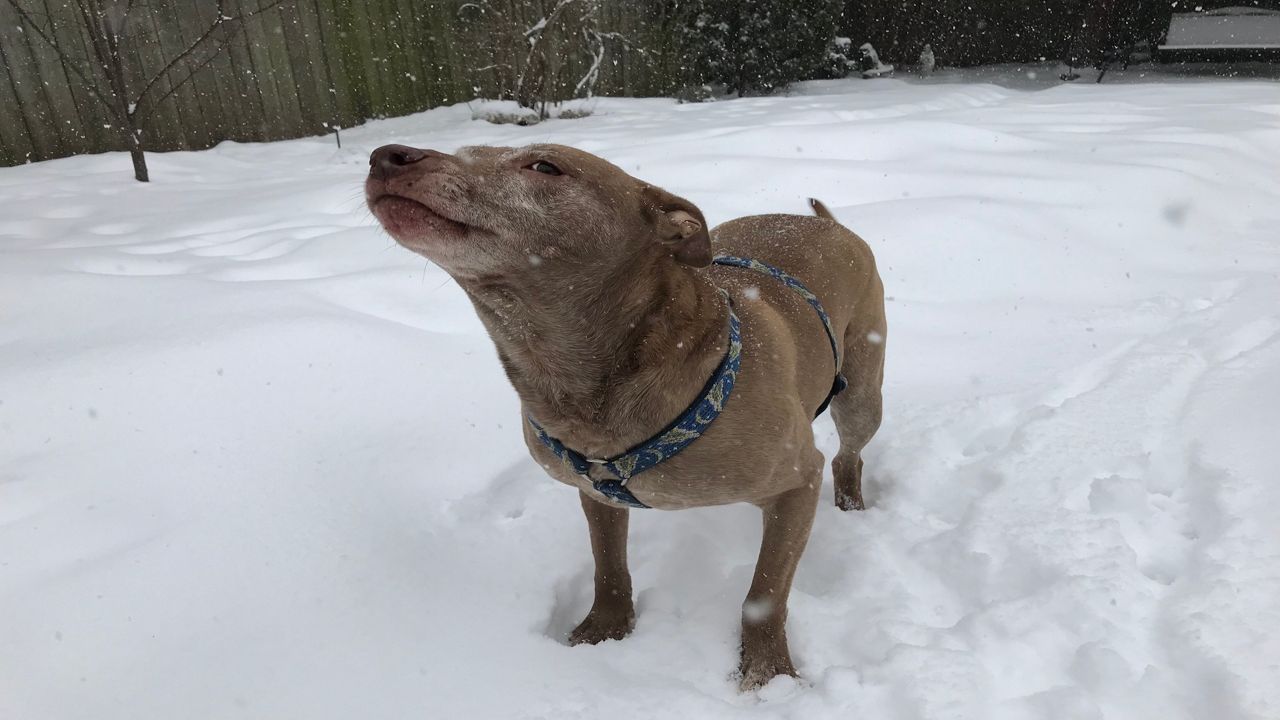SUMMIT COUNTY, Ohio — Animal welfare organizations across Ohio advise pet owners to follow some simple guidelines to keep their companion animals safe during snow storms and extreme weather events.
The winter storm currently moving across the state is bringing heavy snow fall, ice and, in some areas, high winds, making conditions unsafe for pets to be outside, unsheltered.
Ohio, like most states, has laws protecting companion animals, including tethering laws for outside pets, said Kristin Branagan, director of operations at the Humane Society of Summit County.
When deciding how long a dog can be outside, consider the type of fur the animal has and act accordingly — a huskie is obviously more comfortable in cold weather than a short-haired pit bull or chihuahua, she said.
“The biggest rule of thumb is, if it’s too cold for you, it's too cold for your pets,” she said.
However, most animal welfare organizations encourage bringing pets in from outside during cold weather, she said.
If that is not possible, make sure the animal has a draft-free shelter, up off the ground with dry bedding such as hay or pine shavings. The shelter should be large enough for the animal to lie down, but small enough to conserve body heat.
Cold weather also exacerbates arthritis in animals, just like it does in people, so be aware your pet could be in pain, Branagan said. If the animal is in obvious discomfort see your veterinarian.
Be sure to shovel a path around your yard so older dogs have a clear path and don’t have to plough through high snow drifts, she said.
“Think about your elderly, furry friends and make sure that we're not asking them to do something that we wouldn't ask an older relative to do,” she said.

Also, consider putting petroleum jelly on the dog’s paws before going for a walk to help protect the animal’s pads, Branagan said. After the walk, wipe the dog’s paws off to remove salt, de-icers and antifreeze that can make the animal sick if it is licked off.
Also, avoid walking your pet on ponds and lakes on walks, as ice can be deceiving and can cause serious injury if it breaks.
In extreme weather, try to limit the animal’s time outdoors. According to the professionals in Columbus at the Ohio State University College of Veterinary Medicine, it is more difficult to detect frostbite in animals than it is in humans.
If the animal shivers or its tail, ears or feet become red (early stage of frostbite), or pale (advanced frostbite), bring it inside immediately, according to professionals at the Toledo Humane Society.
Very young and very old dogs are more susceptible to the cold, according to Grady Veterinary Hospital in Cincinnati. Let your dog play in the snow but keep a close eye on the animal and consider using a coat or sweater and booties, especially if the dog is thin or elderly.
The vets at Grady also advise those who park outside to walk around their vehicle and bang on the hood before starting up, as cats have been known to crawl into wheel wells and sometimes engines during winter months, and can be seriously injured, or killed by moving engine parts.
Animals also need plenty of fresh water even when it’s cold outside, Branagan said, but be sure to use plastic bowls because the dog’s tongue can get stuck to a metal bowl in freezing conditions.
If an animal in your neighborhood is left outside in inclement weather, contact your local animal shelter, Branagan said. If conditions are extreme and the animal’s life is endangered, call the nonemergency number for your local police department.



